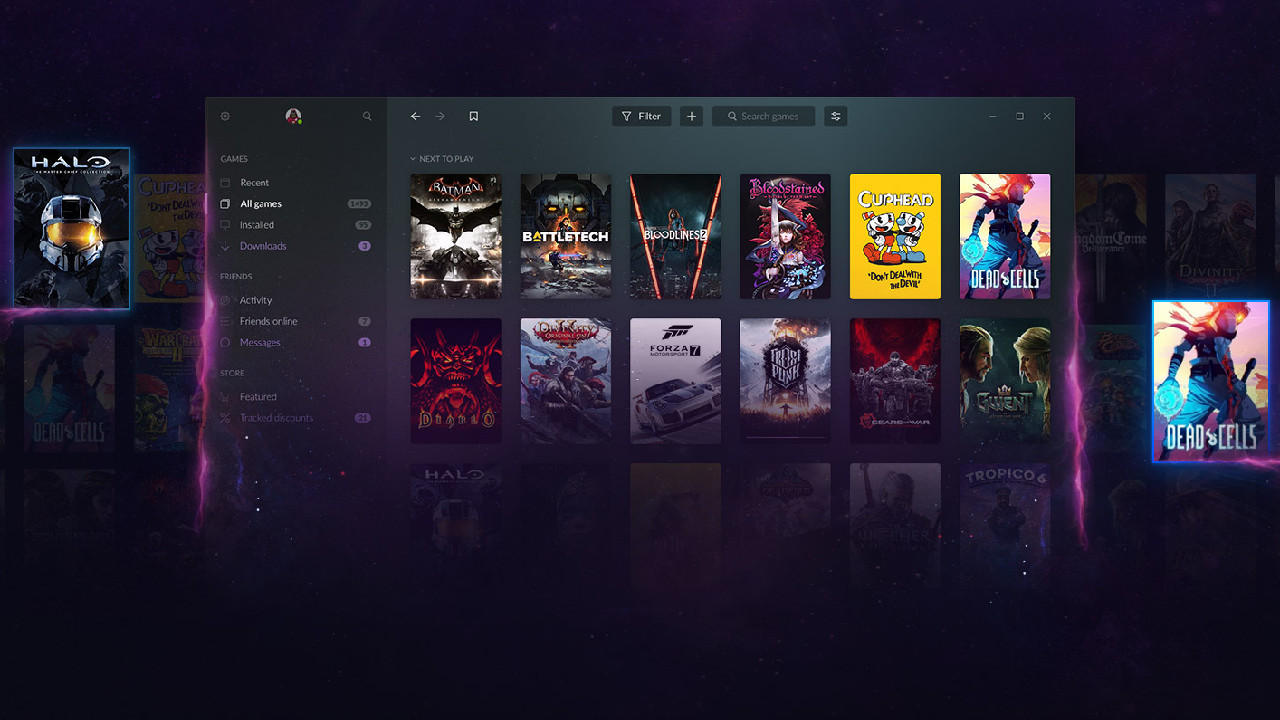How to install GOG games on Steam Deck
A galaxy full of games is only a few easy steps away.

Starting up as a platform for classic retro games patched up to run on modern systems, GOG later adopted a broader target audience with its Galaxy launcher. These days, the subsidiary of CD Projekt offers plenty of popular titles as mostly DRM-free installations through GOG, including those absent from Steam. Our guide can show you how to install GOG games on Steam Deck and play those games wherever you are with Valve's portable powerhouse console.
Before starting, any apps or games you install outside the official Steam Deck store will be on the internal storage, not your microSD card or any other external drives. Be sure to check you have enough space on the primary eMMC SSD, the size of which depends on which Steam Deck model you chose (64GB, 256GB, or 512GB).
How to install GOG games with Heroic

To keep things simple, we will install GOG games using an open-source application called Heroic Games Launcher. It's designed specifically for launching GOG and Epic games on multiple operating systems, including Linux, so it's perfect for your Steam Deck.
You could download Heroic from Flathub, an app store for Linux Flatpak archives, by using any desktop PC. It's an option if you prefer to transfer files manually, but installing it directly onto the Steam Deck is much easier.
- Hit the left-side STEAM button to open the quick menu.
- Navigate down the list to highlight and select Power.
- On the power menu, navigate to and select Switch to Desktop.
Alternatively, you can briefly hold down the power button to access the power menu a little faster. A Switching to Desktop ... notification will appear whichever method you choose. After a short wait, the Steam Deck will boot into its Linux desktop environment, just like you would expect on any regular PC.
- Locate and open the Discover app, which is usually pinned to your taskbar with an icon resembling a blue shopping bag. Otherwise, you can find it in the System tab of the applications menu.
- Using the search function in the top-left of Discover, look for Heroic Games Launcher.
- Find Heroic Games Launcher in the list of results and hit Install.
Using Heroic Games Launcher for GOG games is a great solution, but having to boot into desktop mode whenever you want to open it is a little tedious. Follow these extra steps to have them appear in the regular SteamOS Deck UI alongside your usual library.
- Return to Steam in desktop mode. Navigate the top-most menu to the Games tab and select Add a Non-Steam Game to My Library ...
- A new window titled Add a Game will appear with a list of your software. Navigate this list until you find Heroic Games Launcher.
- Check the box to the left of its title, then hit Add selected programs.
- Close the Steam application and launch the Return to Gaming Mode shortcut from the desktop or applications menu.
Back in the SteamOS Deck UI, you can find Heroic Games Launcher in the non-Steam game category and use it to install any GOG title from your account as usual. The downside to using Heroic is you won't have any information on compatibility like the list of Steam Deck verified games, so be prepared to troubleshoot any problems yourself. It's currently the easiest way to install GOG games on Steam Deck unless some make their way back to Steam.
Get the Windows Central Newsletter
All the latest news, reviews, and guides for Windows and Xbox diehards.
It's unlikely that every GOG game will natively support the Steam Deck controls, and some games might completely lack joypad support. Thankfully, you can still connect some of the best Steam Deck accessories like mice and keyboards if you need to. Valve's willingness for users to tinker with the console and figure out how to install non-Steam games on Steam Deck shows it could stick around for at least a few more years, competing with similar hardware like the Nintendo Switch.

Ben is a Senior Editor at Windows Central, covering everything related to technology hardware and software. He regularly goes hands-on with the latest Windows laptops, components inside custom gaming desktops, and any accessory compatible with PC and Xbox. His lifelong obsession with dismantling gadgets to see how they work led him to pursue a career in tech-centric journalism after a decade of experience in electronics retail and tech support.
